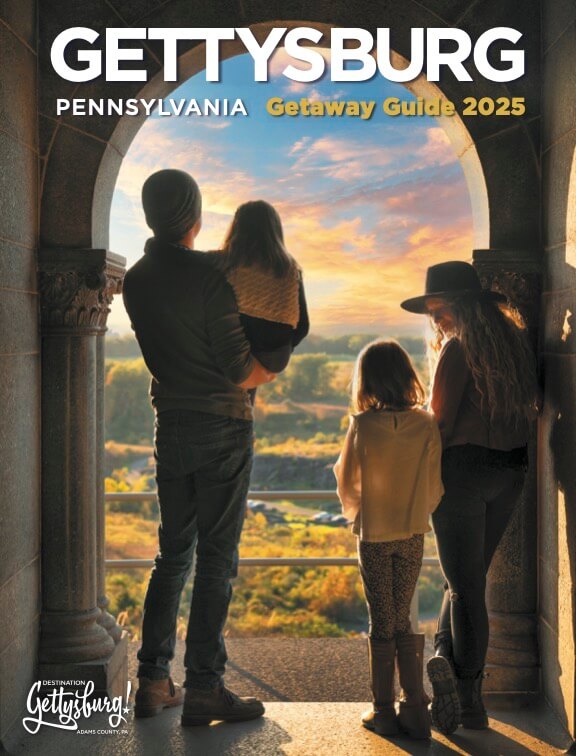The Daniel Lady Farm, acquired in 1999 for restoration and preservation by the Gettysburg Battlefield Preservation Association, played an important role in the three-day battle of Gettysburg.
On July 1, 1863, Union regiments in front of the house on Hanover Road were viewed as a threat to the left flank of the Army of Northern Virginia. Confederate Lt. Gen. Richard Ewell directed a division under Gen. Edward “Allegheny” Johnson to occupy the farm.
The next day, thousands of Confederates formed up just east of the farmhouse to assault Union positions on Culp’s Hill. The troops included the legendary “Stonewall Brigade,” now under Brig. Gen. James A. Walker; Jones’ brigade; “Maryland” Steuarts’ brigade; and Nicholls’ Louisiana Brigade. Colonel Snowden Andrews’ Artillery Battalion also bivouacked on the farm.
As Confederate wounded struggled, or were carried, back to the farm, they found it converted to a Confederate field hospital — officers in the house, rank-and-file in the barn. A forensic examination confirmed that the wounded stained the floors of the house with their blood. Impressions of fingertips bring to life where wounded men propped themselves up against the wall, where bloody rags were piled next to the surgeon’s table, where a hand swept through a pool of blood, and, in an upstairs room, where a dead Confederate was found by the Lady family when they returned after the battle.
The barn is marked by graffiti from soldiers during the battle and, in at least one case, by a Virginia veteran who returned to the farm in several times during the decades that followed.
Both the house and barn display damage from Union artillery shells that overshot Confederate batteries on nearby Benner’s Ridge. Union commander, Gen. George Gordon Meade, saw the Lady Farm Confederates as such a threat that he began planning an assault on the farm on the second day of the engagement, planning that was set aside when Southern forces went on the attack again at Little Round Top, and East Cemetery and Culp’s hills.
When the firing was over and the two armies moved south, the rear portion of the Daniel Lady Farm became part of the massive Camp Letterman Field Hospital where, for the first time in the war, wounded and dying from both sides were treated in a consolidated facility.
Tour the historic house and barn
The Daniel Lady house and barn are open for guided tours from 10 am to 4 pm Saturdays and Sundays. Admission is $10 for adults and children 15 and under are admitted at no charge.
Numerous special events will be held at the farm. They include living histories, reenactments and skirmishes of the Civil War, the French and Indian War and World War II. In December, holiday observances come to the forefront, including the annual Holiday House Tour & Tasting sponsored by the Inns of the Gettysburg Area.
The last weekend in June, the GBPA holds the LARGEST Civil War artifact and collectibles show in the nation at the Eisenhower Inn Allstar Complex on Business Route 15 (Emmitsburg Road).
The Gettysburg Battlefield Preservation Association, founded in 1959, is the country’s oldest Civil War battlefield preservation organization. Over the years, the GBPA acquired a number of privately-owned properties within the “hallowed ground” of the Gettysburg National Military Park, turning them over to the National Park Service. Among early GBPA members were former President Dwight Eisenhower, historian and writer Bruce Catton and entertainer Cliff “Charlie Weaver” Arquette.
The GBPA is a proud sponsor of the Venture Troop 1861, a Boy Scout unit that provides fife and drum music at parades and special events. The troop portrays the musicians that supplied field music for the 1st Regiment, Pennsylvania Reserves Volunteer Corps, also known by its federal designation as the 30th Pennsylvania Volunteers … a regiment recruited from Adams, York and other counties in the Gettysburg area. Venture Troop 1861 is affiliated with the New Birth of Freedom Council of the Boy Scouts of America.


